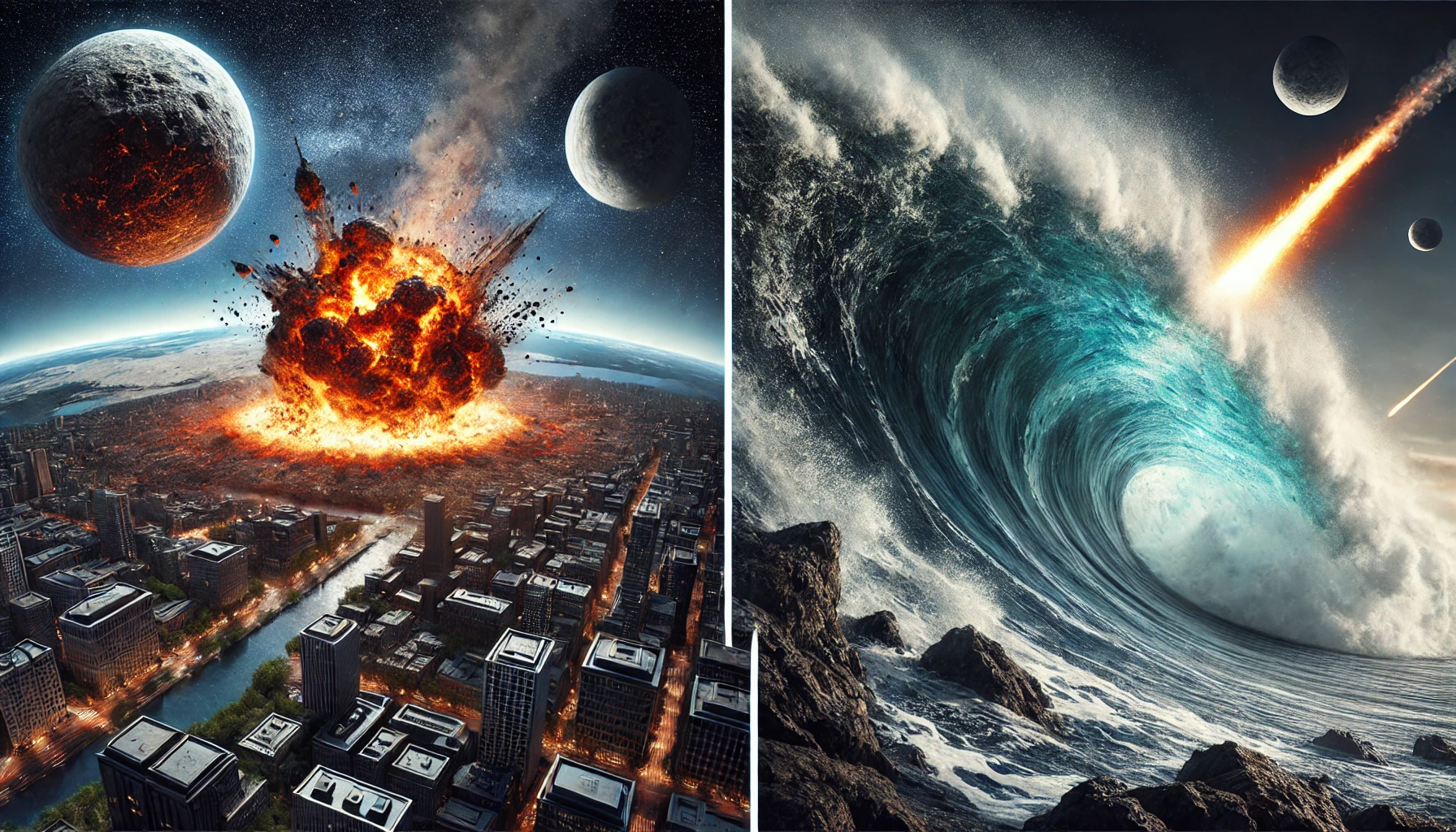Asteroid Impact: What Could Happen in a Collision with Earth?
Asteroids have crossed Earth’s orbit for millions of years, and throughout history, several impacts have significantly influenced the planet’s development. Scientists have now identified a new asteroid, 2024 YR4, which has a small but notable risk of colliding with Earth on December 22, 2032. With a probability of approximately 2.2%, space organizations are closely monitoring its trajectory. But what would happen if a large asteroid actually hit Earth? The effects depend on the impact location—land or sea. This article analyzes the consequences of both scenarios.
Scenario 1: Impact on Land
If a large asteroid struck land, the consequences would be devastating. A 500-meter-wide asteroid hitting Earth at a speed of 20 km/s would release energy equivalent to approximately 9,386 megatons of TNT. This can be compared to the Tsar Bomba, the most powerful nuclear explosion ever, but about 1,800 times stronger.
Immediate Effects:
- Explosion: Would instantly create an enormous shockwave capable of destroying everything within hundreds of kilometers.
- Crater: A 500-meter asteroid would create a crater up to 10 km in diameter, depending on the ground composition.
- Fires: The released heat would immediately ignite forests and cities within a radius of several hundred kilometers.
- Seismic Shockwaves: Would generate earthquakes measuring 7-9 on the Richter scale.
- Atmospheric Impact: Large amounts of dust would be thrown into the atmosphere, potentially blocking sunlight and causing a temporary “asteroid winter.”
Historical examples include the Chicxulub impact 66 million years ago, which contributed to the extinction of the dinosaurs.
Scenario 2: Impact in the Ocean
Since 70% of Earth is covered by water, the probability of an asteroid hitting the ocean is high. The effects would be different but equally catastrophic, mainly through the massive tsunami waves generated.
Tsunami Strength and Speed:
- A 500-meter-wide asteroid impacting the ocean at 20 km/s would create an initial tsunami with a height of up to 98 meters at the impact site.
- The tsunami would spread in all directions at an estimated speed using the formula:Where g = 9.81 m/s² and d = 4,000 meters (average depth of the Atlantic Ocean). This results in a speed of approximately 713 km/h.
Estimated Tsunami Travel Time to Different Coasts:
- Azores (Portugal): ~2 hours
- U.S. East Coast: ~4 hours
- West Coast of Africa: ~5 hours
- East Coast of South America: ~4.5 hours
Global Effects of an Ocean Impact:
- Millions of tons of water would be contaminated by space debris and pollutants from the seabed.
- Airborne water particles could temporarily alter the climate by causing cooling effects.
- Coastal areas around the affected ocean would experience waves between 30 and 50 meters upon landfall.
Comparison Between Land and Ocean Impacts
| Effect | Impact on Land | Impact in the Ocean |
|---|---|---|
| Immediate Destruction | Extreme within hundreds of km | More widespread but less intense |
| Seismic Effect | Strong earthquakes | Minimal |
| Climate Impact | Dust blocking sunlight | Water vapor altering weather |
| Tsunami | None | Massive, waves 30-100 meters high |
| Death Toll | Extremely high locally | Very high in coastal areas |
Summary: How Can We Protect Ourselves?
Scientists worldwide are developing strategies to prevent a future catastrophe. Programs such as DART (Double Asteroid Redirection Test) have demonstrated that we can influence asteroid trajectories by colliding spacecraft with them. If we detect a threatening asteroid in time, we could send a spacecraft to alter its path and avoid disaster.
With continued observation and research, we can minimize the risk of a future catastrophe, but it is crucial to understand what could happen in an impact. By spreading accurate information, we can gain a better understanding of how to protect ourselves from the dangers of space.





